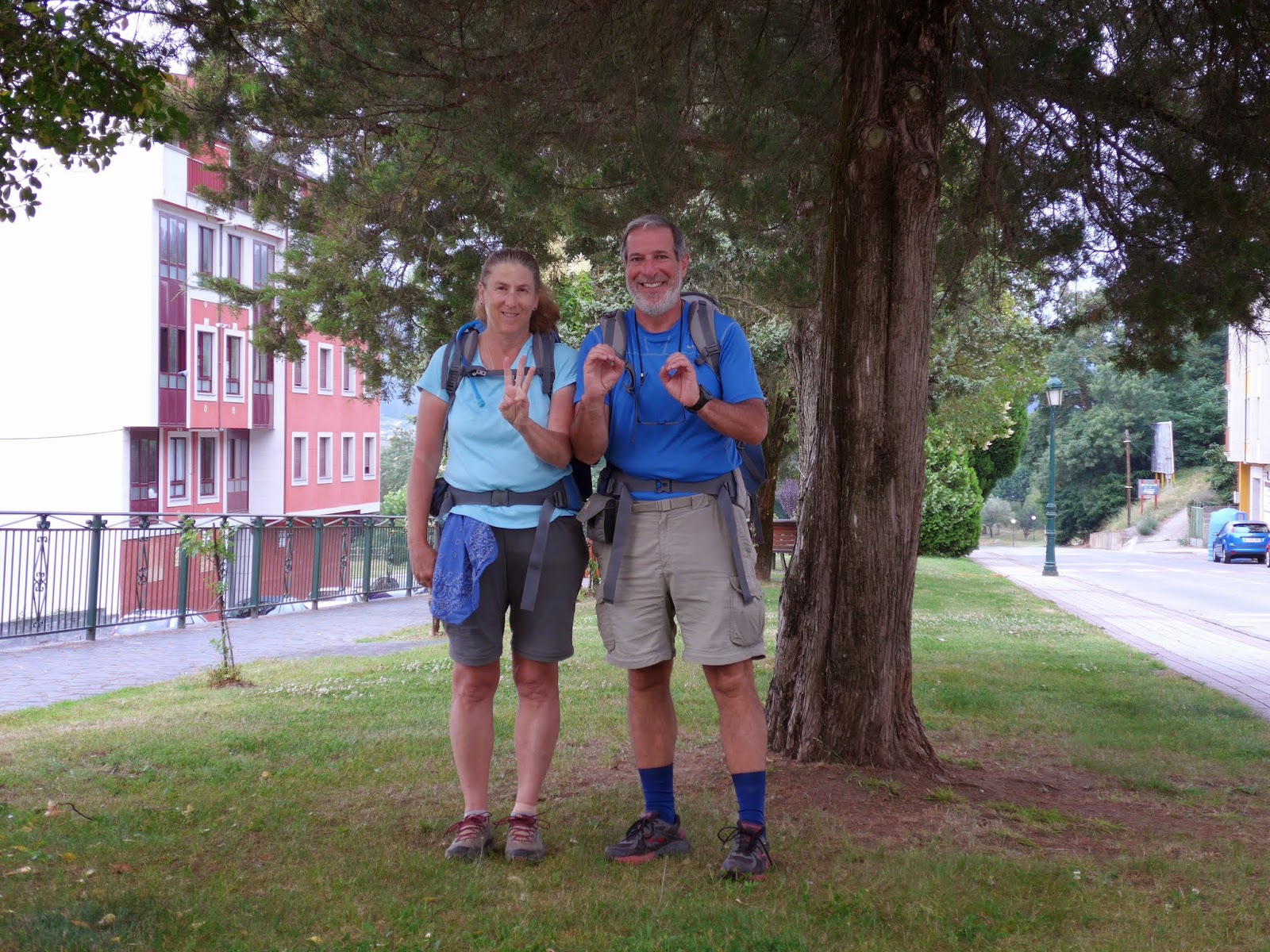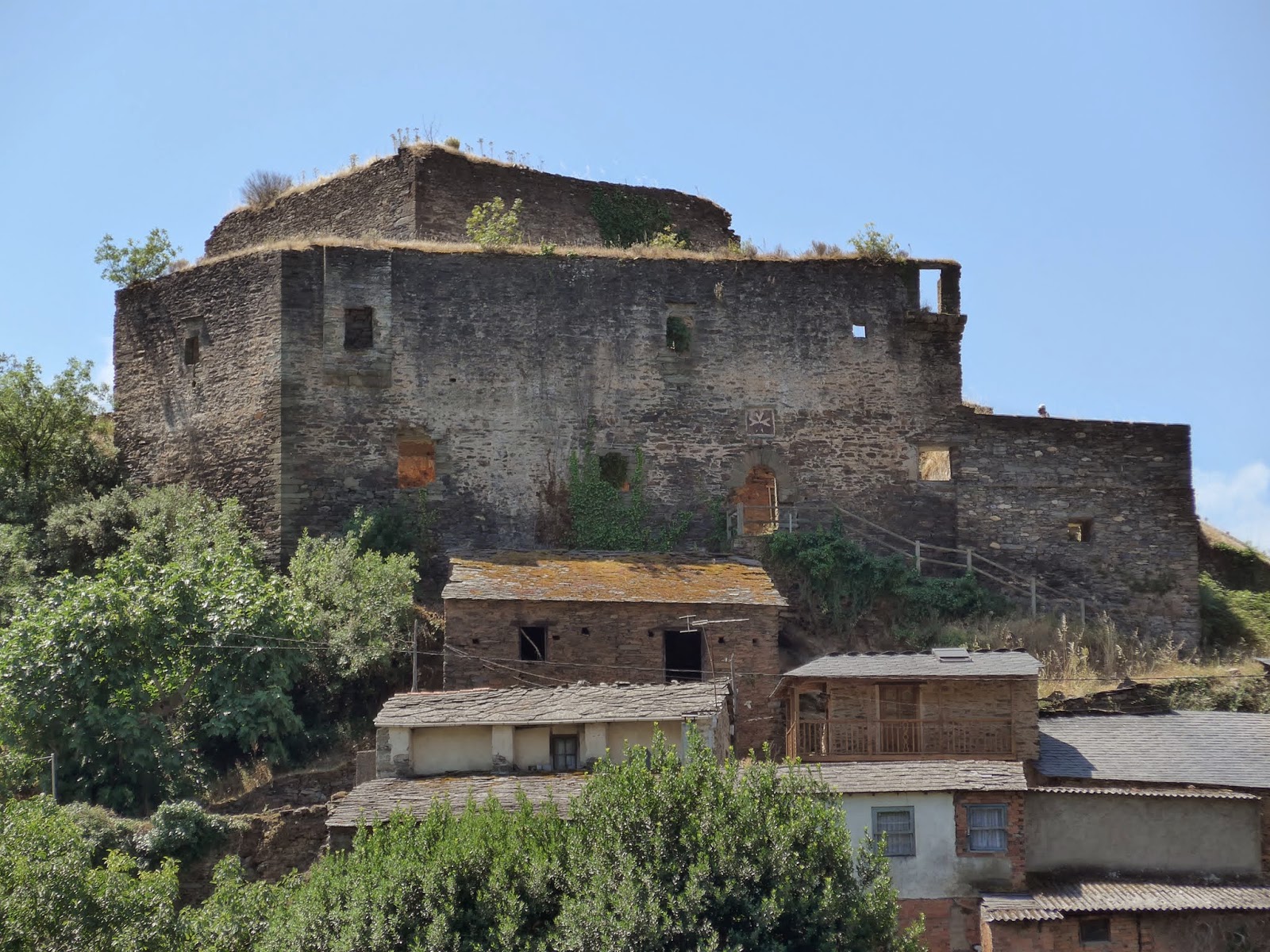Even with an injured foot, I couldn't just sit in a hotel room (much as Ellen tried to persuade me). But I did try to limit walking as much as possible and take plenty of breaks.
The yin and yang of the two sides to St James:

This is what the pilgrimage is all about: the final resting place of St James, in the Cathedral.
Because we were in Santiago during the week leading up to the big feast day of St James, the city was even more alive than usual. There were concerts galore (here's Vintage Trouble in the Plaza de Quintana).
On the 24th was the Spectacular: a lights and fireworks extravaganza. The plaza in front of the Cathedral was filled to capacity more than two hours before the show began. The light show, projected on the front of the Cathedral, was dramatic, and the fireworks show the biggest we've ever seen.
We were far from the only pilgrims who'd scheduled to arrive in time for the festivities. This line in front of the Pilgrim Office (where Compostela certificates are given out) stretched all the way to the end of the block.
A common scene: arriving pilgrims resting in the plaza, gazing up at the Cathedral in front of them.
PS: After our time in Santiago we took the train to A Coruna, the coastal city from which we'd be flying home. We had a great time there: saw a few sights, ate too much great seafood, and swam in the ocean at a nice beach right across the street from our hotel. Once we arrived home, I visited the doc who diagnosed a metatarsal stress fracture. Foot is now booted for a few weeks.























































